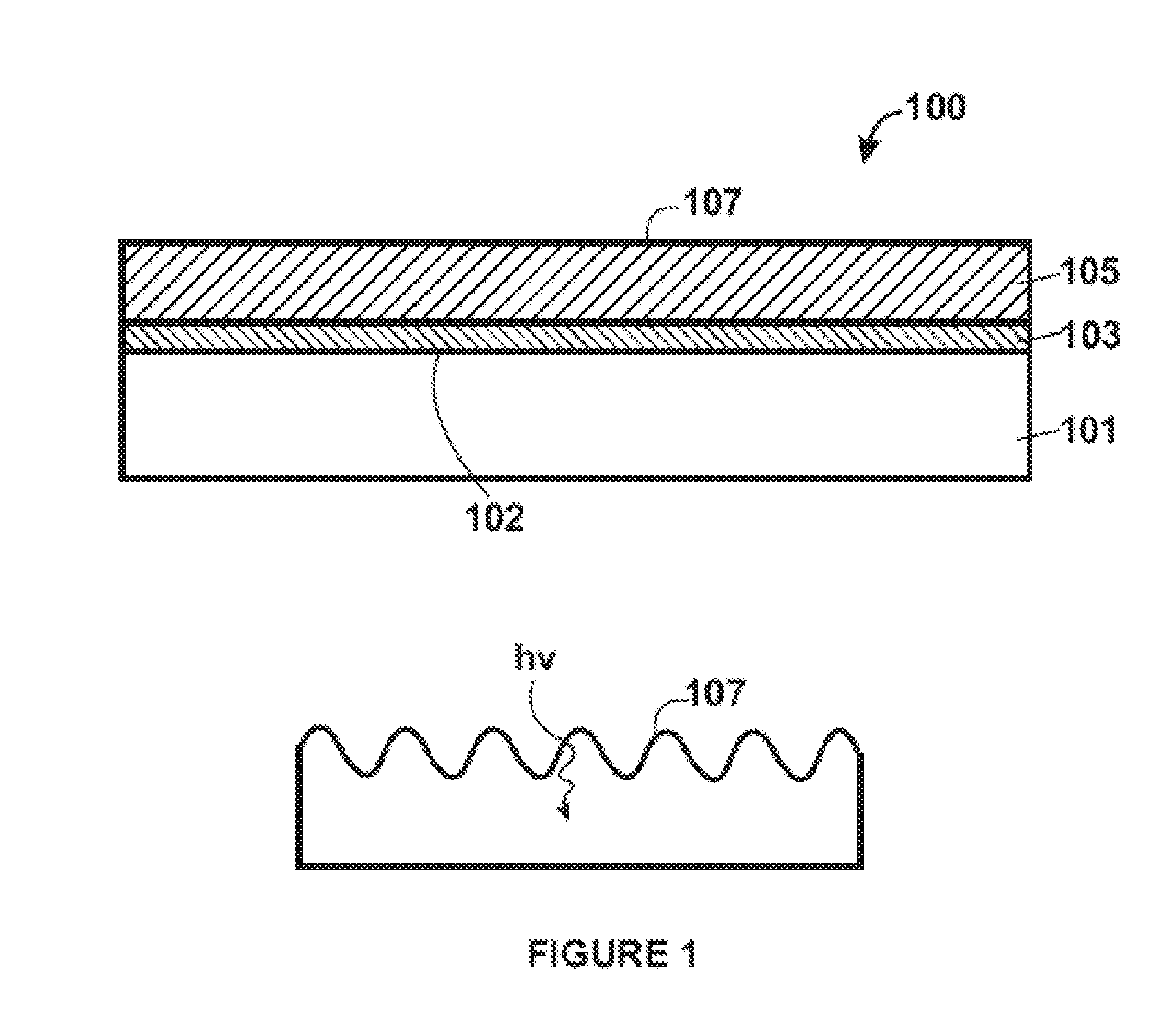Method and structure for hydrogenation of silicon substrates with shaped covers
a silicon substrate and hydrogenation technology, applied in the field of solar energy techniques, can solve the problems of increasing the cost of silicon substrates, and increasing the cost of silicon substrates, and achieve the effect of less cost and easy handling
- Summary
- Abstract
- Description
- Claims
- Application Information
AI Technical Summary
Benefits of technology
Problems solved by technology
Method used
Image
Examples
embodiment
General Method Embodiment
[0032]In a specific embodiment, the present invention provides a method for fabricating a photovoltaic device that can be outlined as follows:[0033]1. Provide a semiconductor substrate, e.g., single crystal silicon, silicon germanium, Group II / VI, Group III / V;[0034]2. Form a crystalline material characterized by a plurality of worm hole structures therein overlying the semiconductor substrate[0035]3. Subject the crystalline material to a hydrogen plasma species to occupy at least one or more of the worm hole structures therein of the crystalline material within a vicinity of an interface between the thickness of material and a remaining portion of the semiconductor substrate;[0036]4. Provide a glue layer overlying a surface region of the crystalline material;[0037]5. Join the surface region of the crystalline material via the glue layer to a support substrate;[0038]6. Delaminate a portion of the crystalline material from the semiconductor substrate;[0039]7. ...
PUM
| Property | Measurement | Unit |
|---|---|---|
| roughness | aaaaa | aaaaa |
| surface roughness | aaaaa | aaaaa |
| surface roughness | aaaaa | aaaaa |
Abstract
Description
Claims
Application Information
 Login to View More
Login to View More - R&D
- Intellectual Property
- Life Sciences
- Materials
- Tech Scout
- Unparalleled Data Quality
- Higher Quality Content
- 60% Fewer Hallucinations
Browse by: Latest US Patents, China's latest patents, Technical Efficacy Thesaurus, Application Domain, Technology Topic, Popular Technical Reports.
© 2025 PatSnap. All rights reserved.Legal|Privacy policy|Modern Slavery Act Transparency Statement|Sitemap|About US| Contact US: help@patsnap.com



